Grow Climbing Roses: Add Beauty & Style To Your Garden!
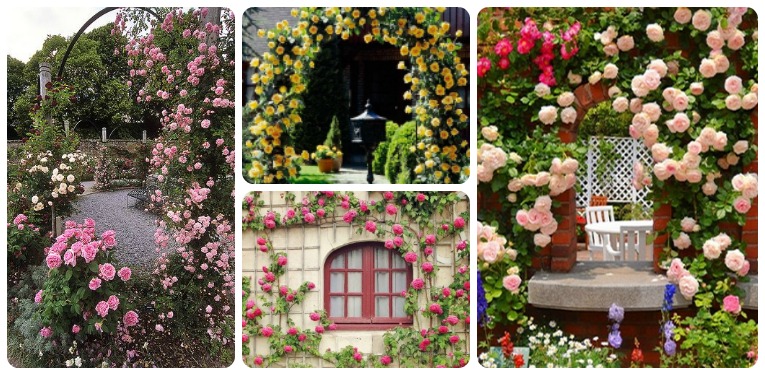
Climbing roses (Rosa spp.) need structural support and training to grow in the right shape or direction. Of the many different varieties of climbing roses, most grow in U.S. Department of Agriculture plant hardiness zones 5 through 9. These full-sun plants require six hours of direct sun each day, regular fertilizer and a strong structural support to protect them from falling in high winds or heavy rain. Whether your style is traditional or modern, get creative with your climbing roses.
Climbing Rose Basics


Climbing roses get their vining growth habit from two different sets of growth shoots. A main cane runs through the core of the plant, which requires attachment and support from a structure such as a fence or trellis. To attach the main cane of your climbing rose to a support structure, use soft, flexible materials, such as cloth or nylon. From this main cane, a second set of shoots emerges and produces flowers. In most climbing rose varieties, the flowers are most prolific when grown horizontally as opposed to vertically.
Trellises
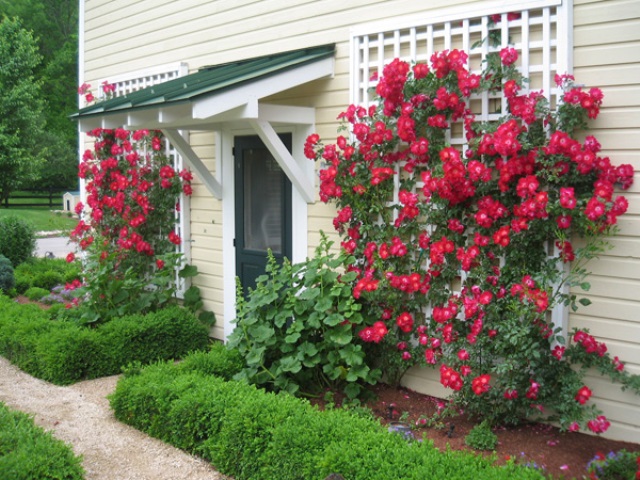
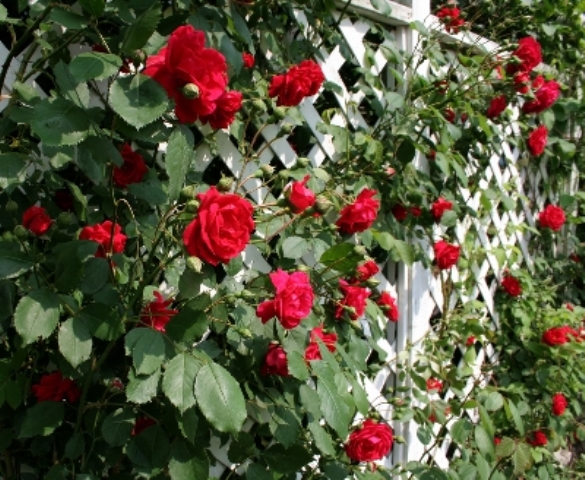

Trellises offer a classic look for placing and supporting climbing roses. Due to the variety of trellis styles and materials, you are sure to find one that matches your landscape style. Before you choose a trellis, or before you build one yourself, be sure you know the mature size of your climbing rose variety. It is important the trellis be large and strong enough for the plant and anchored firmly. Choose the trellis material wisely. Metal trellises tend to last longer than wood, which easily rots, but you run the risk of burning your climbing rose on a hot metal trellis exposed to full afternoon sun.
Growing Against a Wall



Climbing roses soften the look of walls when grown on the side of your home. They also bring life and color to a bare wall on a shed or pool house. To grow them on walls, you still need a trellis to provide support. Leave at least 2 to 4 inches of space between the trellis and the wall. This allows room for air circulation, and prevents your climbing rose from becoming overheated. It also allows you the freedom to take down the rose or move the trellis if you need to repaint or replace siding.
Other Ideas

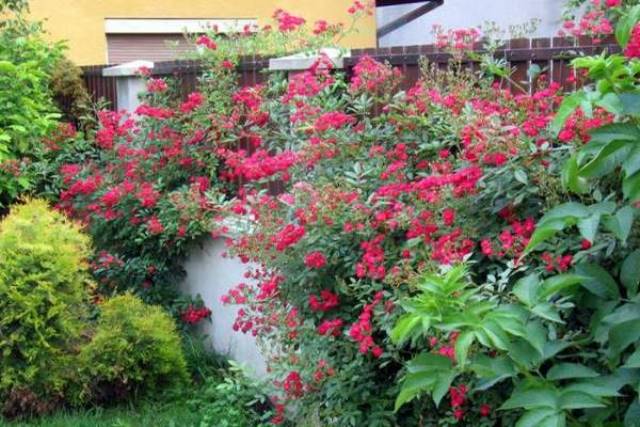

You can use an existing wood or wrought iron fence as a trellis. Your climbing roses will produce many more buds when grown horizontally. If you prefer a vertical plant with fewer flowers, consider training your roses to grow up and around an arbor, or on a rose tower. If you have a large, established tree in your yard, wrap your climbing rose around the trunk of the tree for a decorative effect. Roses growing on along a roof line or on a pitched roof also look attractive.
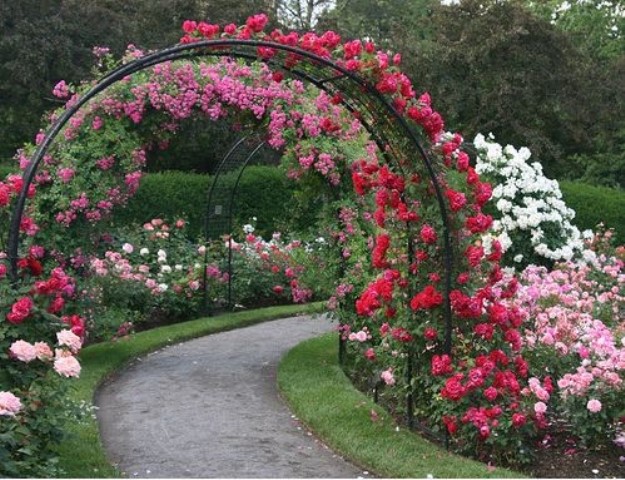


Comments are closed.